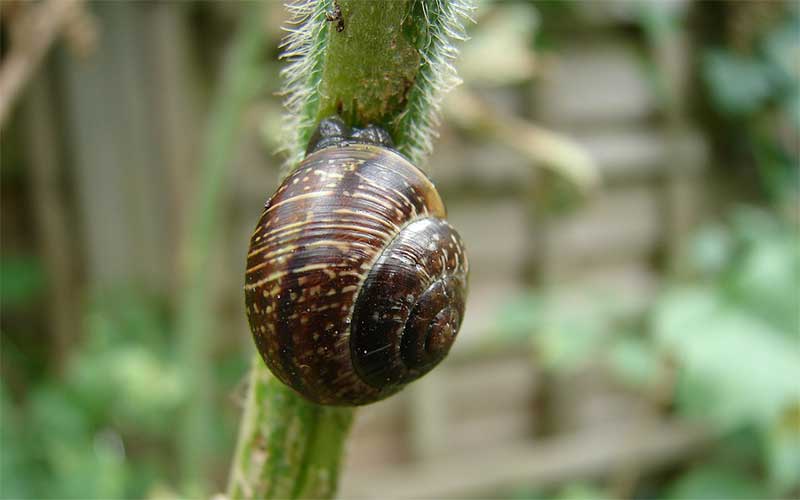What do snails eat?
The diet of a snail depends on its species, but many of them are herbivores and consume leaves, stems, flowers, fruits, vegetables, and so on. Others are carnivores and prefer to feed on other small animals. Some others are omnivores capable of eating plants and animals and some species even add carrion to their diet, or consume almost any dead organic material, either vegetable or animal.
Why do snails have a shell?
The shell of the snails is a hard and firm structure, consisting mainly of calcium carbonate, which protects the visceral mass of the snail, this means the set of internal organs of the mollusk. Also, it allows them to conserve their moisture, hide from predators and protect when hibernating. The shell is one of the most important parts of the anatomy of snails.
How do snails reproduce?
Snail reproduction is very complex. Most land snails have male and female reproductive organs at the same time, so they are hermaphrodites. Others have separate genders, that is, there are snails which are either male or female.
Usually, land snails mate with each other and transfer sperm to each other. After the eggs fertilize, the snail deposits them in a nest, and later several small and almost translucent snails born.
What is the largest land snail species?
It is believed to be Achatina achatina, the Giant African Snail or Giant Tiger Land Snail, that reaches an average length of 7.1 inches and 3.5 inches in diameter. However, some individuals in the wild have reached a length up to 11 inches.
Other large species the Achatina fulica, also known as Giant African Snail, is an average 7.9 inches in length.
Can terrestrial snails be eaten?
Yes, some species become food for humans. Two of the most consumed species are Helix aspersa and Helix pomatia. But this does not mean that you can eat any snail found in a garden, in fact, the preparation of land snails must be very careful to eliminate the germs and parasites that these mollusks can harbor to avoid serious illness like meningitis.
What is the life expectancy of a snail?
Most snails live between two and seven years but may die before, victims of their numerous predators. Snails in captivity live 10 to 15 years, and some individuals have reached 25 years of age.
Are snails insects?
No. Although many are small, snails are mollusks, just like octopuses. They also belong to the class Gastropoda, which includes aquatic snails and slugs.
How do snails move?
They do not have legs, but they move thanks to a ventral foot whose muscular contractions cause a waveform action which allows movement. Also, they secrete mucus to reduce friction on the surfaces they touch to avoid damaging their body while moving.
How fast do snails move?”
Good question! These mollusks do not advance more than a few millimeters or inches every time. Helix lucorum speed is only 1 mm/s, but other species reach 0.5 inches per second or even 0.78 inches per second.
How do snails breathe?
Snails are pulmonate animals; this means that they have lungs, so instead of breathing through gills, they get oxygen from the air of the atmosphere which then passes into a lung.




